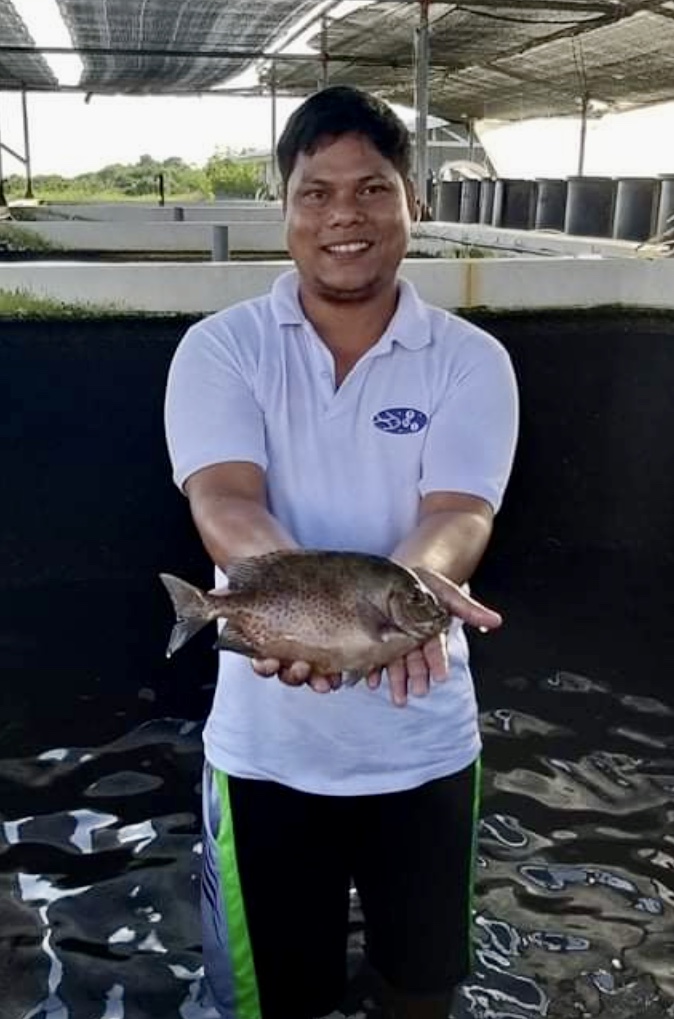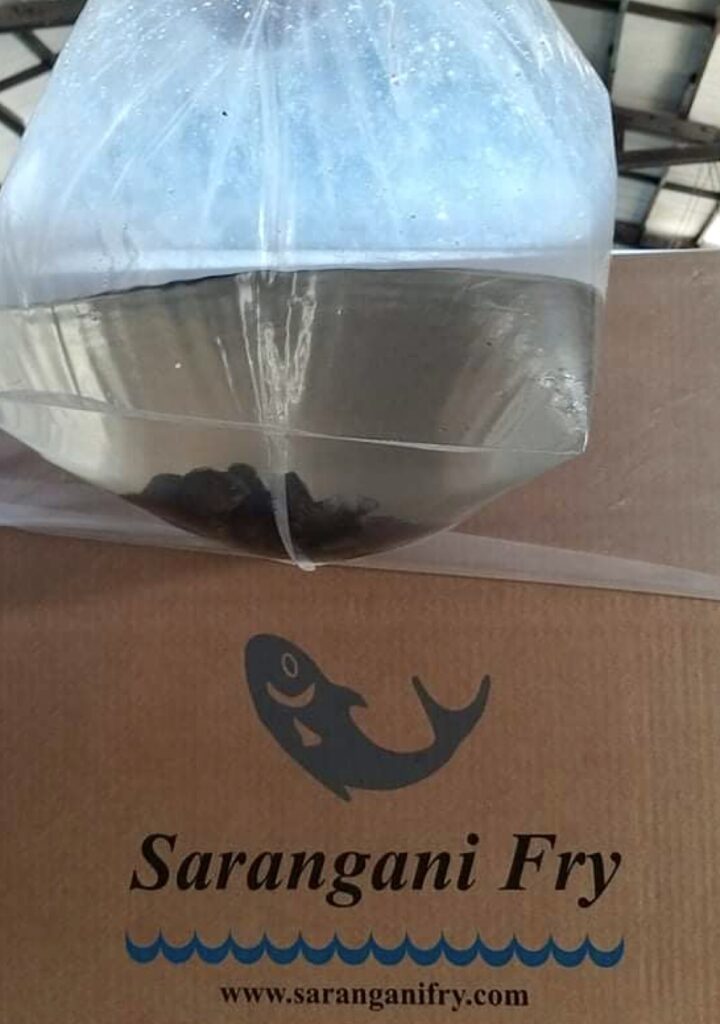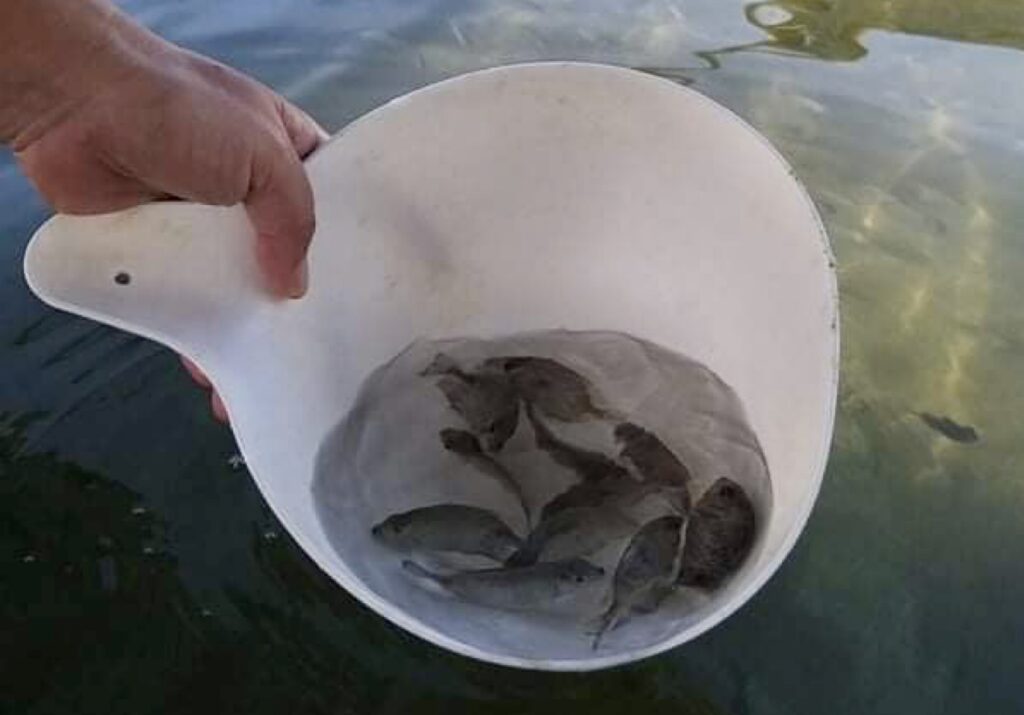By Henrylito D. Tacio
Photos courtesy of FHI
The fish is called malaga in the northern part of Luzon, where it is very popular. But in Mindanao, it is known as kitong or kitang. Cebuanos call it danggit. In some areas, it is called as kikyero or samaral. And they come in several species.
Siganid or rabbitfish, as it is widely known, is becoming one of the favorite fish of Filipinos as it is very tasty (described by one scribe as “a slight, barely delectable sweetness”). You can have it broiled, sinigang (stew characterized by its sour and savory taste), or paksiw (cooked and simmered in vinegar).
According to R. Jamil Jonna of the Animal Diversity Organization, the fish got its name from its peaceful temperament, rounded blunt snout, and rabbit-like appearance of the jaws. The fish “are important reef herbivores that browse individually or in schools over the reef or feed on plankton within the water column.”
Siganids are widely distributed in the tropical Indo-Pacific, from the east coast of Africa to Polynesia, southern Japan to northern Australia, and in Eastern Mediterranean. One species, Siganus rivulatus, has been able to penetrate from the Red Sea through the Suez Canal to the Mediterranean, which the fish has now become common.
They naturally occur in the wild where they inhabit mangroves, seagrass beds, and reef flats, says Dr. Rafael D. Guerrero III, an academician at the National Academy of Science and Technology and former executive director of Philippine Council for Aquatic and Marine Research and Development.

Gathering siganid fries 
Siganid ready for harvest
In the past, siganids were harvested only from the wild in the open seas. But today, thanks to science, they can be raised in brackishwater ponds, pens, and cages as well as in sea pens and cages.
“Of the 26 species of siganids in the country, the two most commonly cultured are the Siganus guttatus (spotted variety) and Siganus vermiculatus (striped variety),” Dr. Guerrero says.
In the wild, the two species occur most of the time. Although the spotted variety is heavier, the striped variety grows faster. But in terms of meat quality and taste, the former is supposed to be better and tastier.
“Siganid culture in the Philippines is not widely practiced, except in some brackishwater government farm areas and in a number of experimental farms,” the Food and Agriculture Organization (FAO) of the United Nations reported some years back.
The FAO paper carried this information: “Net cage culture is not yet a well-established or developed culture technique. A floating net cage farm consists of a number of interlocked cages suspended in bamboo and/or wooden frame. The frame is either kept afloat by a bamboo raft or styrofoam floats and held in place by heavy anchors. The net cages are of different sizes, with netting of different mesh sizes.
“Hapa cages are made of fine mesh net and are used to rear fry to the fingerling size. Nursery cages are used to culture fingerlings to 15-20 centimeters, while in the grow-out cages the fish attain the marketable size. The siganids are fed with algae (lumot) usually once a day daily at 15% of the body weight.”

Ready for delivery 
Siganid fries
If siganid can be compared to livestock, the goat is most likely its counterpart. “Of all fish, siganid is just like a goat, just leave it there and it grows. So, even scientists from developed countries are now focused on siganid as an aquaculture species,” Dr. Westly R. Rosario, chief of the Dagupan-based National Integrated Fisheries and Technology Development Center (NIFTDC), told Philippine Daily Inquirer.
Dr. Rosario is the leader behind the perfection of milkfish culture and the creation of marine-tolerant strains of tilapia. Today, he and his team are credited for developing a hybrid siganid.
But that’s going ahead of the story. On the website thefishsite.com, Dr. Rosario said the Philippines “is the top producer of wild-caught and cultured rabbitfish, with annual landings of around 30,000 tons.
“The demand for export within Southeast Asia and other markets like Hawaii is very high,” he went on. “However, few Filipinos are raising rabbitfish due to the low supply of fingerlings and un-disseminated technology. Their popularity as food fish is leading to the decline of their numbers in the wild.”
Actually, Dr. Rosario and his team worked closely on the life cycle of siganid in captivity for about a decade. In 2011, they were able to crossbreed the two most popular siganid species to come up with a more superior breed.
Gabriel Cardinoza, in a news report for Philippine Daily Inquirer, said the researchers “first mated a female striped malaga with a male spotted malaga. Then they reversed the combination, this time with a female spotted malaga and male striped malaga.”
The successful crossbreeding – the first time two species were crossbred in captivity – was as conceptualized because of the new policy of the Bureau of Fisheries and Aquatic Resources to develop other kinds of fish to complement bangus (milkfish), whose production has now become costlier due to the soaring prices of feeds.
“Siganids are herbivores (feeding on plants like filamentous algae) and omnivores (feeding on supplemental feeds and formulated diets),” says Dr. Guerrero. “They are valued over milkfish and tilapia in our local markets and have good export potential.”
Despite these desirable qualities, siganids only contribute less than one percent of the country’s total farmed fish production, Dr. Guerrero reports.
Most of those cultured siganids come from Luzon and Mindanao, particularly Davao and Caraga regions.
Like other cultured fish, the production of siganids is highly seasonal due to dependence on the supply of fry. “Supply of wild fry is highly seasonal – only from March to July – and only available in certain areas,” Dr. Guerrero says.
But the supply of fry for culture is no longer a problem these days as fish farmers can order them from Finfish Hatcheries Inc. (FHI).
The FHI is at the forefront of supplying fish fingerlings (bangus, lapu-lapu, and seabass, to name a few) in the Philippines. In 1996, FHI started operations as part of the business integration program of the company’s agribusiness unit. Its hatchery is located in Lun Masla, Malapatan, in Sarangani Province.
FHI is one of the country’s few hatcheries which produce siganid fingerlings of Siganus guttatus whole year-round. “We produce 500,000 pieces per month,” says Rene B. Bocaya, FHI’s assistant vice-president for sales, “and distribute them to Luzon, Visayas and Mindanao.”
The price of fingerling is P5/inch when picked up in Sarangani.
According to him, siganid is being polycultured with bangus in cages, fishpens, and ponds. “Many cage operators, however, are doing monoculture because of the fish’s premium price in the market at P350 per kilo.”
The demand for export is very high, he adds.

